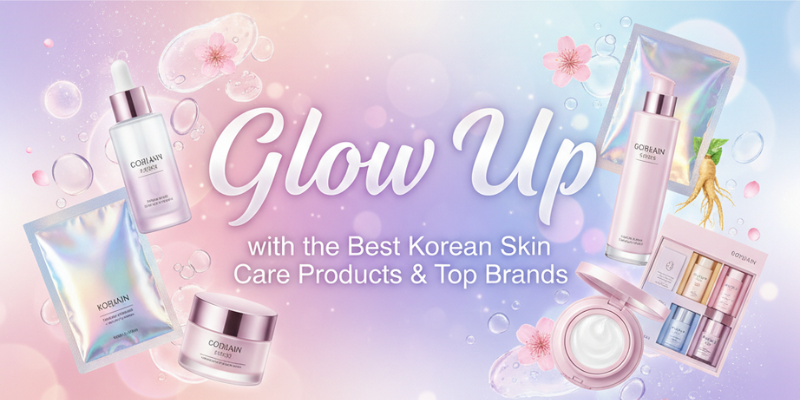Picture this: you’re debugging a stubborn production bug at 2 a.m., eyes heavy, coffee gone lukewarm — and yet the next morning your skin looks… better. That’s the weird magic of a well-layered skincare routine. As someone who spends their days thinking in stacks, dependencies, and version control, I started treating skincare like a tiny software project: small changes, careful sequencing, and measured experiments. The result? A routine that actually works for late nights, long sprints, and real life.
If you’re curious about korean skincare, or you’ve bought products from a handful of skincare brands and now feel overwhelmed, this guide will walk you through the logic (and the order) so you can layer confidently morning to night.
Why order actually matters (think of it as your skin’s protocol stack)
In software, packets follow protocols in a strict order. In skincare, products have to be applied in an order that lets each one do its job. Thin, watery, water-based products absorb quickly and should go on before thicker, oil-based ones. Active serums need direct skin contact to work; sealants like creams or oils lock everything in.
Apply things in the wrong order and you’re basically wrapping a firewall around your serum — it never reaches the skin. So: order = effectiveness. Simple.
The golden rules of layering
-
Texture first, thickness later. Lotion before cream, water-based serum before oil.
-
Actives with caution. Don’t mix multiple strong acids and retinol at once — treat them like conflicting packages.
-
Patch test, always. Before deploying a new product full scale, test a small area.
-
Sunscreen goes last (AM). SPF is your final protective layer for daytime.
-
Less can be more. You don’t need a 12-step routine to get results — you need the right steps in the right order.
Step-by-step: Morning routine (quick, protective, efficient)
A neat, effective morning routine is like starting your day with a clean build: fast, dependable, and secure.
-
Gentle cleanser — removes overnight oil and residue.
-
Toner or hydrating mist (optional) — balances and preps skin (water-based).
-
Essence — lightweight hydration and skin health booster (signature in many korean skincare regimens).
-
Serum / ampoule — antioxidants (like vitamin C) or hydrating hyaluronic acid. Prioritize one active.
-
Eye cream — pat, don’t rub.
-
Moisturizer — locks hydration.
-
Sunscreen (SPF 30+) — absolute must — last layer.
Think of the AM routine as your baseline security patch: it prevents damage and sets you up for the day.
Step-by-step: Evening routine (repair, treat, recover)
Nighttime is for maintenance and upgrades — bug fixes and feature rollouts while you sleep.
-
Oil cleanser (if wearing makeup or sunscreen) — dissolve the day first.
-
Water-based cleanser — double cleanse for a clean slate.
-
Exfoliant / chemical treatment (2–3x per week) — AHAs/BHAs, used thoughtfully.
-
Toner / essence — rehydrate after exfoliation.
-
Targeted serums — actives like niacinamide, peptides, or retinol (retinol goes at night).
-
Eye cream
-
Moisturizer / cream — thicker at night if your skin is dry.
-
Face oil or sleeping mask (optional) — heavier sealants for very dry skin.
If you’re layering retinol, treat it like a major library upgrade: introduce slowly, monitor for reactions, and don’t combine with exfoliating acids at the same time.
Active ingredients — compatibility cheat sheet
-
Vitamin C (morning): Great with sunscreen; avoid pairing with retinol in the same routine.
-
Retinol (night): Powerful; start low and slow. Don’t mix with strong AHAs/BHAs on the same night.
-
AHAs/BHAs (exfoliants): Use on alternate nights if combined with retinol.
-
Niacinamide: Friendly with most ingredients — a reliable teammate.
-
Hyaluronic acid: Works well under heavier moisturizers — a hydration booster.
Treat actives like services in a microservice architecture: some can be called together, others must remain isolated.
Choosing products: brands, uniqueness, and what to prioritize
There’s a dizzying world of korean skincare brands and unique korean skincare offerings. Instead of hunting every trending drop, pick products that solve your primary issue (dryness, acne, sensitivity) and fit your budget. When scanning skincare brands, look for transparency in ingredients, pH information for acids, and sensible usage guidance.
If you love exploring, try a product from unique korean skincare brands as a side experiment — but treat it like an A/B test: change one thing at a time, and track results for 4–8 weeks.
Common mistakes (and how I learned to avoid them)
-
Layering all the powerful serums at once. I used to throw everything into my routine thinking ‘more = faster.’ Spoiler: it caused irritation. Now I focus on one or two actives and cycle them.
-
Skipping sunscreen. I treated SPF like optional until I met stubborn hyperpigmentation — sunscreen is the non-negotiable.
-
Not waiting between layers. Patience matters. Give serums a minute to sink in; rushing creates pilling and wasted product.
Pro tips from an IT mindset
-
Version control your routine. Keep a simple log (even a note on your phone): product, when you started, and skin changes.
-
Rollback plan. If irritation appears, stop recent additions and revert to a minimal, known-good routine.
-
A/B test products. Try a new serum on one cheek or alternate nights so you can accurately measure the effect.
-
Automate what you can. Use gentle, reliable products for busy days — automation reduces decision fatigue.
Quick sample routines you can copy
Simple AM (all skin types): Cleanser → Essence → Hyaluronic serum → Moisturizer → Sunscreen
Simple PM (all skin types): Oil cleanse → Gentle cleanser → Niacinamide serum → Moisturizer → Sleeping mask (weekly)
Conclusion — layer thoughtfully, iterate patiently
Layering Korean skincare is less about ritual and more about logic: respect textures, prioritize actives, and protect with sunscreen. Treat it like a tech project — start with a minimal viable routine, monitor results, and iterate. You don’t need every product on the shelf; you need the right order, consistent care, and the patience to let changes take effect.
If you want, tell me your skin type and the products you already use — I’ll sketch a simple AM/PM stack you can try this week. Think of it as a deploy plan for better skin.



